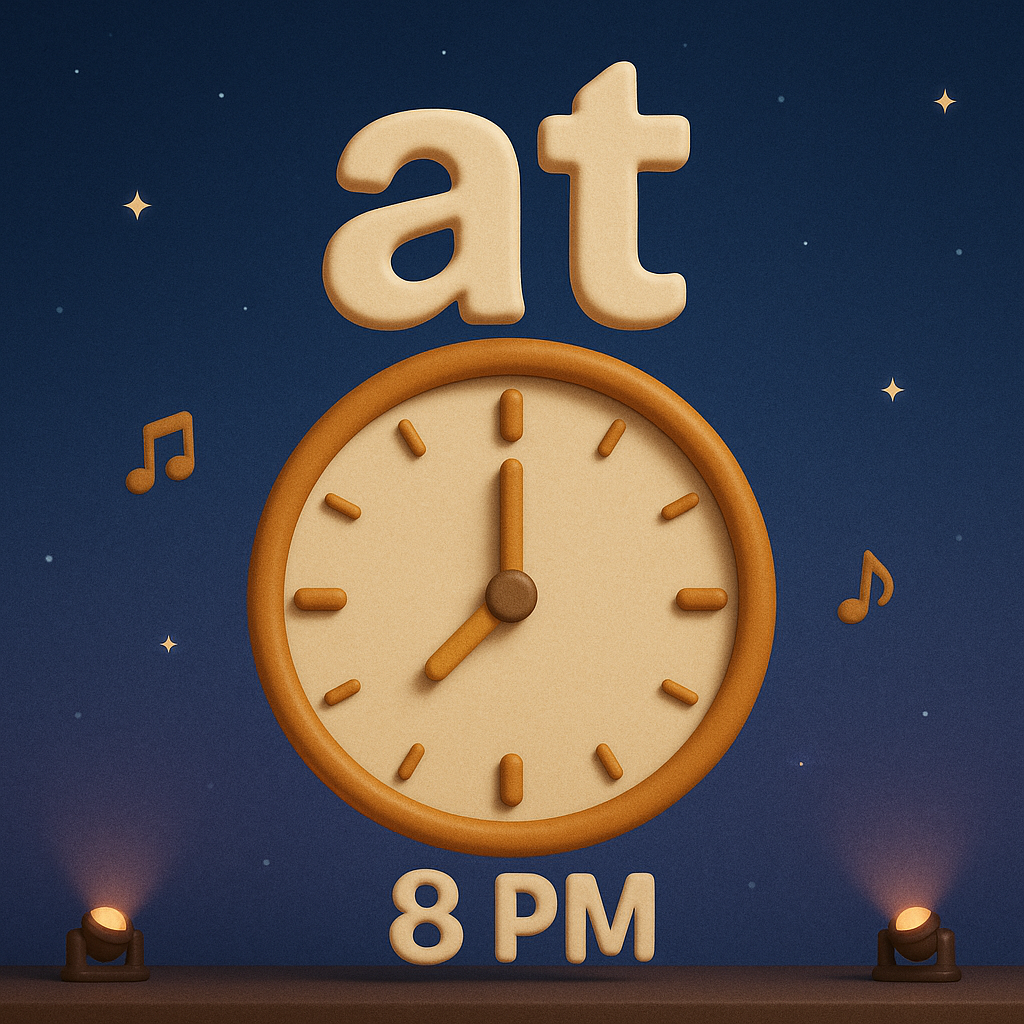At
Definition
At is a preposition that indicates a specific point or position in space, time, or a state. It is commonly used to show location, time, or circumstances in relation to an event or object.
Parts of Speech
- Preposition
Pronunciation
American English
- IPA Pronunciation: /æt/
- Respelling: AT
British English
- IPA Pronunciation: /æt/
- Respelling: AT
Etymology
The word "at" comes from the Old English "æt," which was used to indicate a point in space or time. It is derived from Proto-Germanic "*at," which has a similar meaning of position or location, and is related to similar terms in other Germanic languages.
Derivatives
- Attain (verb, derived from "at" + "taindre" in Old French)
- Attach (verb)
- Attainable (adjective)
- Attend (verb)
- Attention (noun)
Synonyms
- Near
- Close to
- In
Antonyms
- Away from
- Far from
- Outside
Usage
The preposition "at" is frequently used to indicate a specific time, location, or state. For example, "She is at the park," "The meeting is at 3 PM," or "He is at peace."
Related Terms
- In: Used to indicate location within something.
- On: Used to indicate a position directly supported by a surface.
- By: Used to indicate the proximity or the agent performing an action.
Detailed Definitions
Preposition
- Indicating location or position: Used to denote a specific place or position.
- Example: "She is waiting at the bus stop."
- Indicating time: Refers to a specific point in time.
- Example: "The concert starts at 8 PM."
- Indicating state or condition: Used to show a certain mental or emotional state.
- Example: "He is at ease with the decision."
at



🇨🇳 Mandarin (Chinese)
- 在 (location)
IPA: /t͜saɪ̯³⁵/
Respelling: zài
- 於 (formal, literary location or time)
IPA: /y̯⁵⁵/
Respelling: yú
🇮🇳 Hindi
- पर (location)
IPA: /pər/
Respelling: par
- में (inside, within)
IPA: /mɛː/
Respelling: mein
🇪🇸 Spanish
- en
IPA: /en/
Respelling: en
- a
IPA: /a/
Respelling: a
🇫🇷 French
- à
IPA: /a/
Respelling: à
🇸🇦 Modern Standard Arabic
- في
IPA: /fiː/
Respelling: fī
- عند
IPA: /ʕind/
Respelling: 'ind
🇧🇩 Bengali
- এ
IPA: /e/
Respelling: e
- তে
IPA: /te/
Respelling: te
🇷🇺 Russian
- на
IPA: /na/
Respelling: na
- у
IPA: /u/
Respelling: u
🇵🇹 Portuguese
- em
IPA: /ẽj̃/
Respelling: em
- no/a (contraction of "em" with the article)
IPA: /no, na/
Respelling: no, na
🇮🇩 Indonesian
- di
IPA: /di/
Respelling: di
🇩🇪 German
- an
IPA: /an/
Respelling: an
- bei
IPA: /baɪ̯/
Respelling: bei
🇯🇵 Japanese
- で
IPA: /de/
Respelling: de
- に
IPA: /ni/
Respelling: ni
🇻🇳 Vietnamese
- tại
IPA: /tāj/
Respelling: tại
- ở
IPA: /ɔ˧˩/
Respelling: ở
🇰🇷 Korean
- 에
IPA: /e/
Respelling: e
- 에서
IPA: /e.sʌ/
Respelling: e-seo
🇹🇷 Turkish
- de/da
IPA: /de, da/
Respelling: de, da
🇵🇰 Urdu
- پر
IPA: /pər/
Respelling: par
- میں
IPA: /mɛː/
Respelling: mein





